Discover the Top 8 Recommended Crystals for Anxiety and Stress – AZ Animals
Many are exploring unconventional ways to reduce stress and anxiety in our fast-paced world. One such method is using healing crystals, believed to resonate with our energy and promote tranquility. This article will explore crystals known for their calming properties, discussing their features and uses. Whether you’re well-versed or new to crystals, let’s go over 8 of the best crystals for anxiety and stress.
Citrine
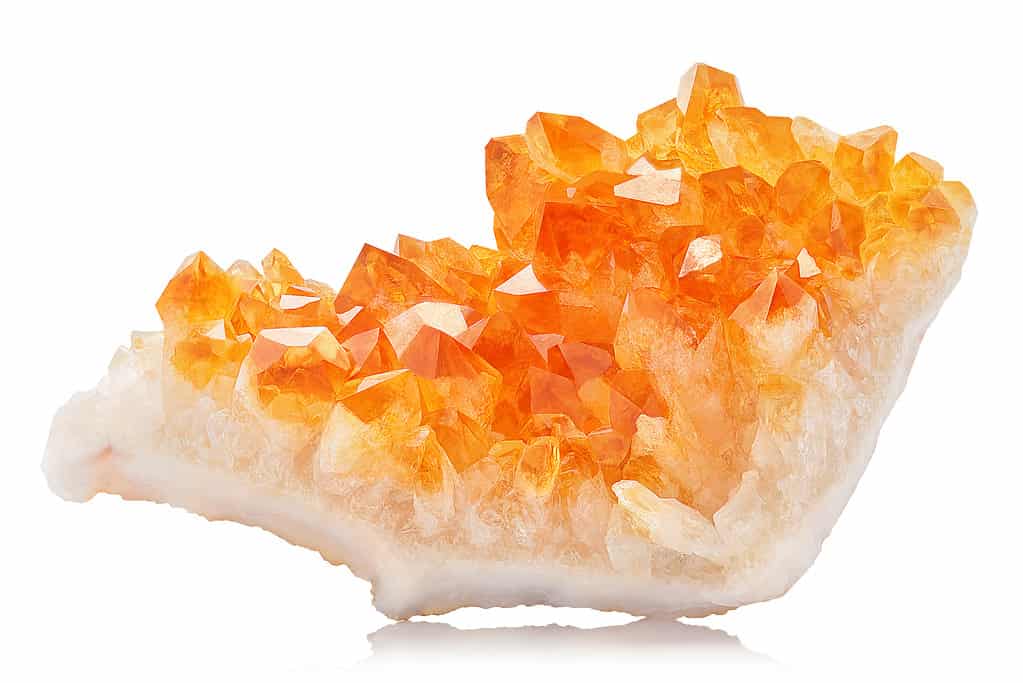
©Sebastian Janicki/Shutterstock.com
Citrine is a type of quartz. It has rich yellow to deep golden colors reminiscent of sunlight. Named after the translated word for lemon (“citron”), it embodies the energizing spirit of the sun and vibrant life force. The crystal has a rating of 7 on the Mohs hardness scale. This means it durable enough for various uses, including jewelry. Citrine is also heat-sensitive; prolonged exposure to light or heat can alter its color.
In terms of its spiritual properties, it’s often hailed as the “Stone of Abundance and Prosperity.” Many believe citrine carries energies that can promote success and attract wealth. In terms of anxiety and stress relief, many users turn to citrine for its uplifting energy. It may also help dissipate negative feelings and foster a sense of optimism and joy.
Rose Quartz
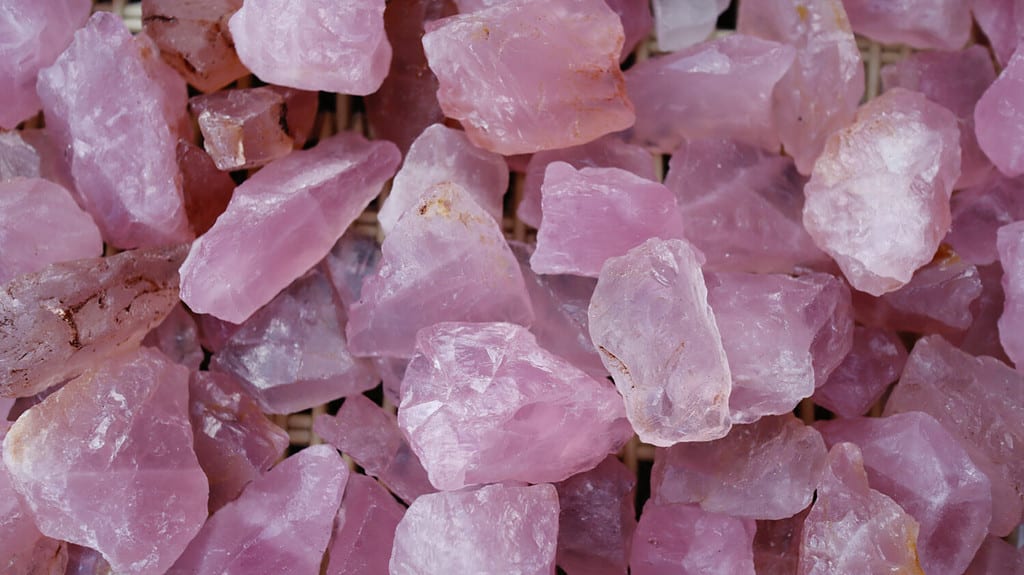
©Pranisa Thanatattanon/Shutterstock.com
Rose quartz, famed for its delicate pink hue, is a variety of quartz crystal known as the “Stone of Love.” This soft pink crystal, ranging from pale to more intense shades, symbolizes unconditional love and compassion. It owes its color to traces of minerals. Like other quartz varieties, it sits at a 7 on the Mohs hardness scale, making it durable for various uses.
For anxiety and stress relief, rose quartz is a favorite due to its calming nature. Many associate it with healing emotional wounds and promoting feelings of self-love and self-acceptance. Advocates for crystal healing suggest that rose quartz can help to release pent-up emotions, clear negative feelings, and ease the symptoms of stress and anxiety. Its loving energy may also foster empathy, reconciliation, and forgiveness of others. This makes it an ideal companion for maintaining harmony in relationships. Using rose quartz during meditation or simply keeping it near can serve as a comforting presence for those battling stress and anxiety.
Amethyst
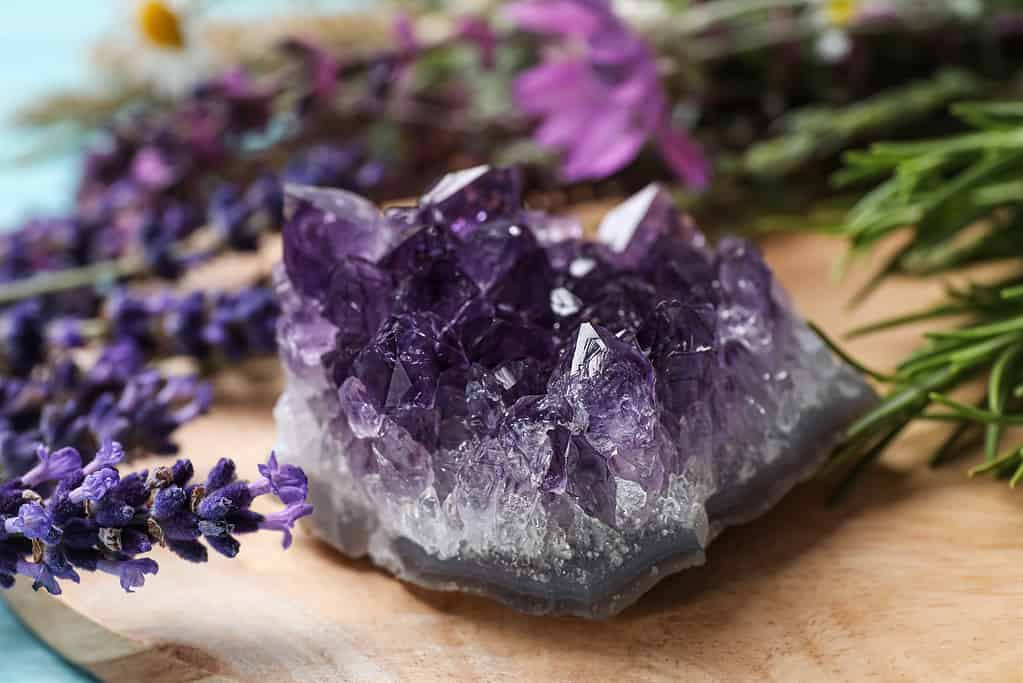
©iStock.com/Liudmila Chernetska
Amethyst is a captivating member of the quartz family and is famed for its striking purple color, which ranges from light lavender to deep violet. The presence of iron and aluminum, along with natural irradiation, accounts for its unique color. With a Mohs hardness rating of 7, it’s robust enough for various uses, from jewelry to house decor.
Amethyst is a popular choice in crystal healing when it comes to easing anxiety and stress. Often referred to as the “Stone of Tranquility,” many believe this crystal possesses calming energies to help clear the mind and reduce negativity. Users often turn to amethyst to help promote emotional balance and foster a peaceful state of mind. Its purported ability to enhance intuition and spiritual growth makes it a favorite for meditation practices. By meditating with amethyst, you can better attune to your inner self and reduce anxiety, promoting a more profound sense of peace and well-being.
Moonstone
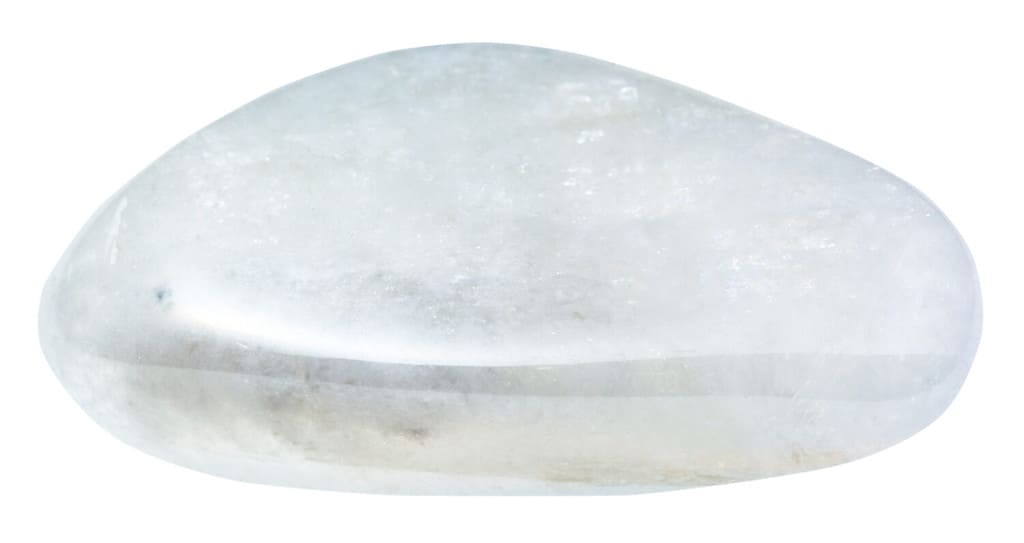
©vvoe/Shutterstock.com
Moonstone, a member of the feldspar family, has an otherworldly glow, a phenomenon known as adularescence. This iridescent play-of-color, usually blue or white, creates a beautiful shimmer that moves beneath the stone’s surface. It is reminiscent of moonlight dancing on water, hence the crystal’s name. The stone’s color varies, ranging from milky white to grey, brown, yellow, or even peach in some cases.
Moonstone is a stone of inner growth, strength, and new beginnings in crystal healing. Its calming energy helps soothe emotional instability and stress, relieving those suffering from anxiety. Often associated with the calming power of the moon, it balances emotions, fostering a sense of tranquility and harmony. Furthermore, it enhances intuition and empathy, promoting a deeper understanding of oneself and others. Carrying or meditating with a moonstone might feel a comforting sense of calm, making it an excellent ally in managing stress and anxiety.
Rhodonite
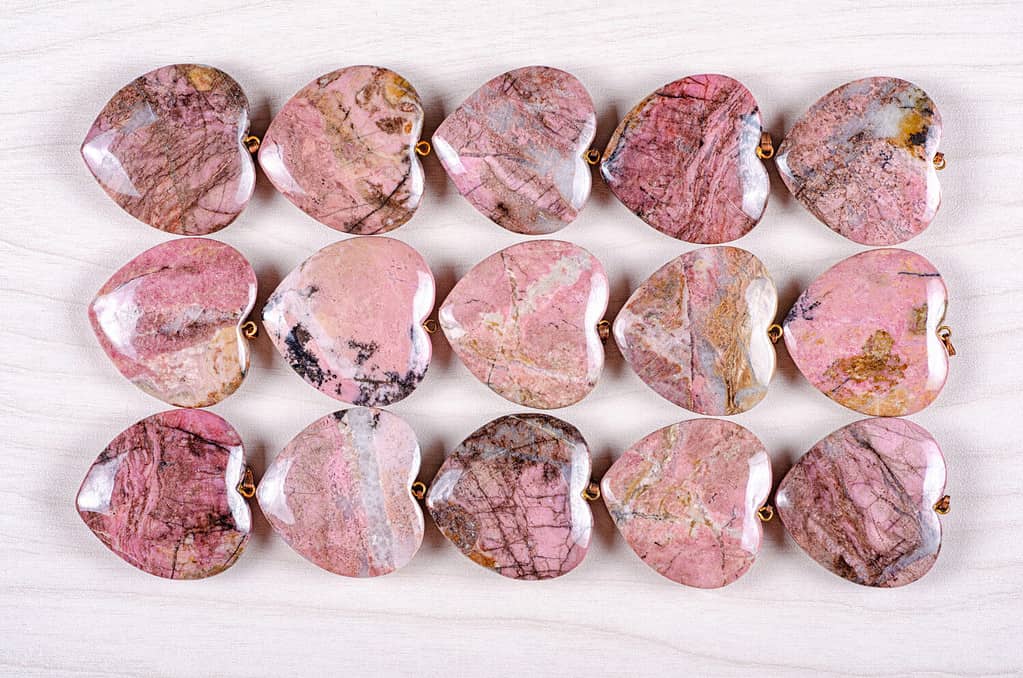
©verbaska/Shutterstock.com
Rhodonite is a mineral with a striking pink and black contrast. This manganese silicate displays deep pink or rosy tones interspersed with black veins. Its hardness ranges from 5.5 to 6.5 on the Mohs scale, making it sturdy enough for various uses, including jewelry.
Rhodonite, the “Stone of Compassion”, resonates with emotional healing and balance, making it a potentially valuable stone for individuals experiencing anxiety and stress. Rhodonite’s calming influence is said to help with emotional balance, self-love, and forgiveness, easing emotional wounds and promoting a sense of well-being. Its energy assists in releasing fear, providing a sense of grounding, and encouraging feelings of confidence and self-worth. Whether worn, held, or placed in one’s environment, rhodonite may be soothing and supportive for those navigating stressful and anxiety-provoking situations.
Celestite
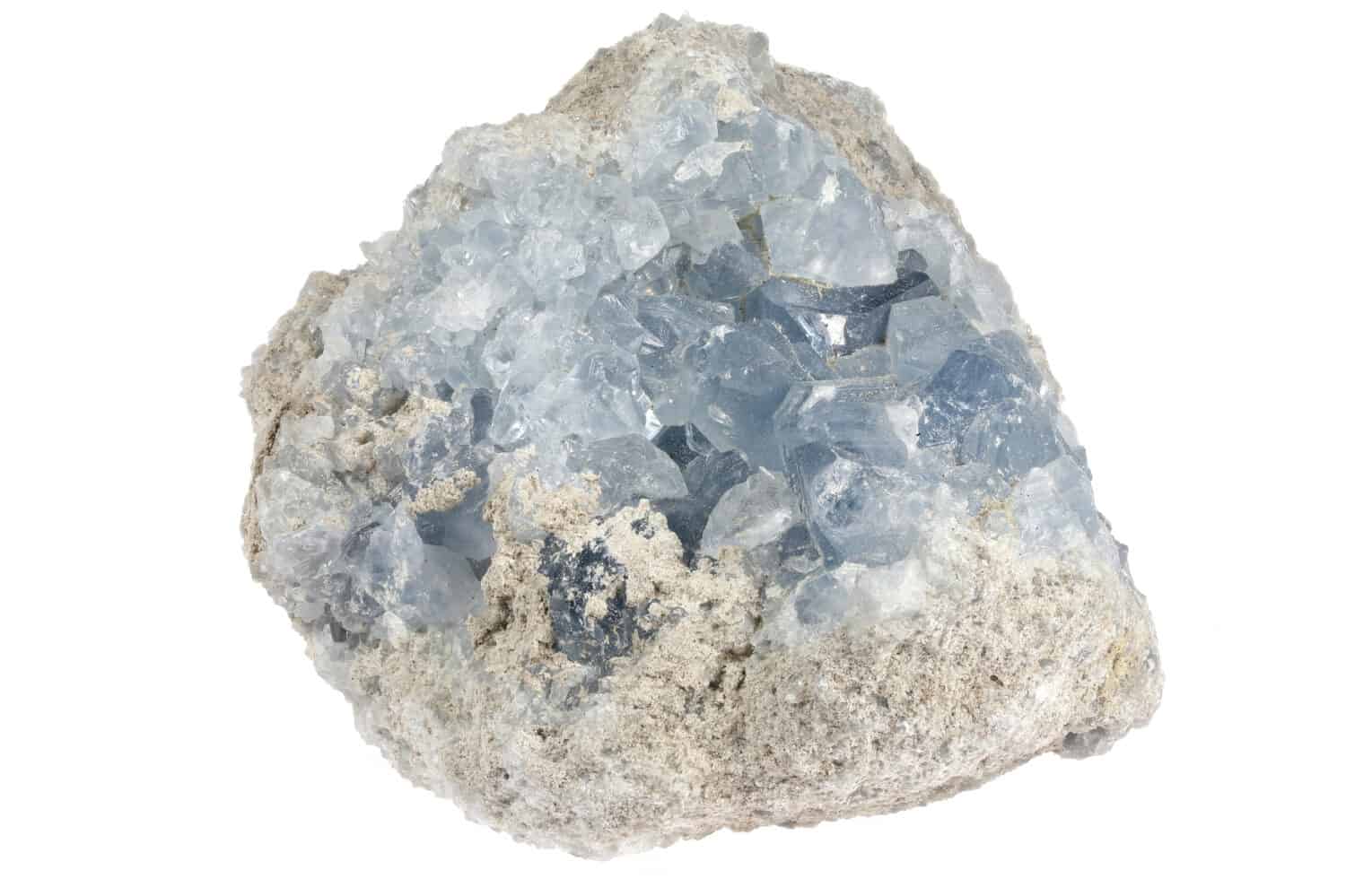
©Bjoern Wylezich/Shutterstock.com
Celestite, also known as celestine, is a mineral with a serene, sky-blue color and celestial beauty. This strontium sulfate mineral often forms in geodes and cavities of sedimentary rocks and exhibits a vitreous (glass-like) luster. With a hardness of 3 to 3.5 on the Mohs scale, celestite is relatively soft, requiring careful handling.
Regarding its metaphysical properties, celestite is a calming and uplifting stone, potentially beneficial for those dealing with stress and anxiety. It may carry a soothing, gentle energy that can ease the mind and reduce worries. Crystal healing enthusiasts often associate celestite with divine power and use it to stimulate spiritual growth and awareness. Many believe its calming influence aids in clearing mental clutter, promoting clarity, and creating a sense of serenity. Holding celestite during meditation or placing it in a tranquil space might cultivate an environment of peace and relaxation, which helps manage symptoms of stress and anxiety.
Tourmaline
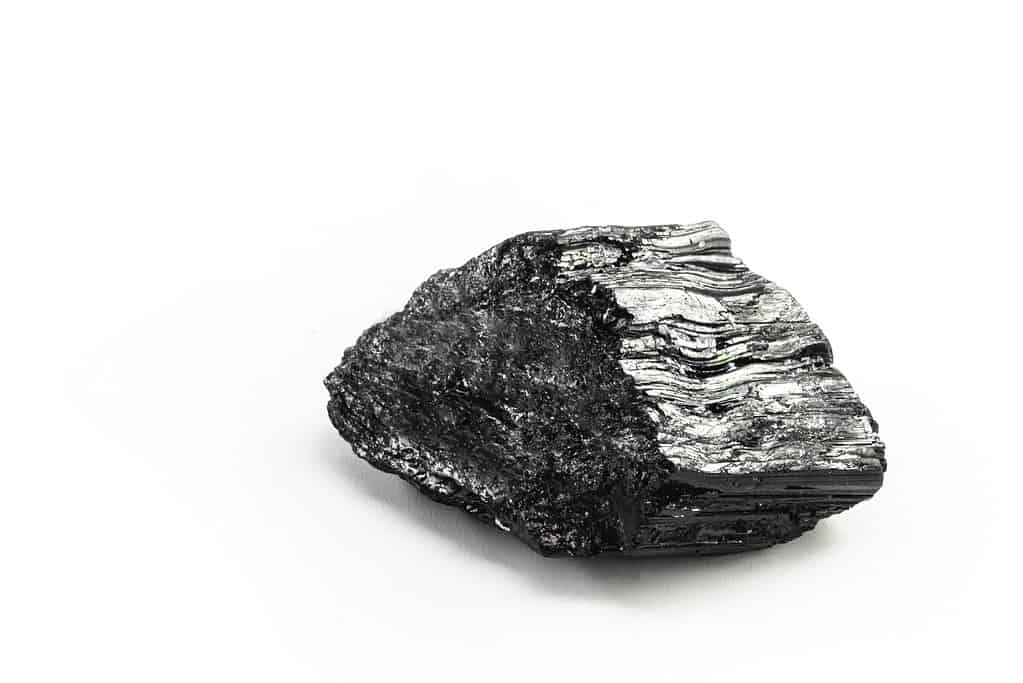
©iStock.com/RHJ
Tourmaline is a complex boron silicate mineral that comes in an impressive range of colors. Tourmaline exhibits a diverse color palette from jet black to blush pink, vibrant green to deep blue, and even multicolored varieties. Its Mohs hardness rating varies between 7 and 7.5, making it suitable for various uses, including jewelry.
Regarding anxiety and stress relief, many crystal enthusiasts turn to tourmaline minerals, specifically black tourmaline, for their reputed protective and grounding properties. Also known as the “guardian stone”, tourmaline may dispel negative energies and protect the user from harmful influences. Its grounding energy promotes stability, security, and inner balance. Furthermore, it’s said that black tourmaline can transform dense, heavy energy into lighter, positive vibrations, helping to alleviate stress and anxiety.
Whether worn as jewelry, carried as a talisman, or used during meditation, tourmaline could offer support in navigating stressful situations or anxious feelings in life.
Smoky Quartz
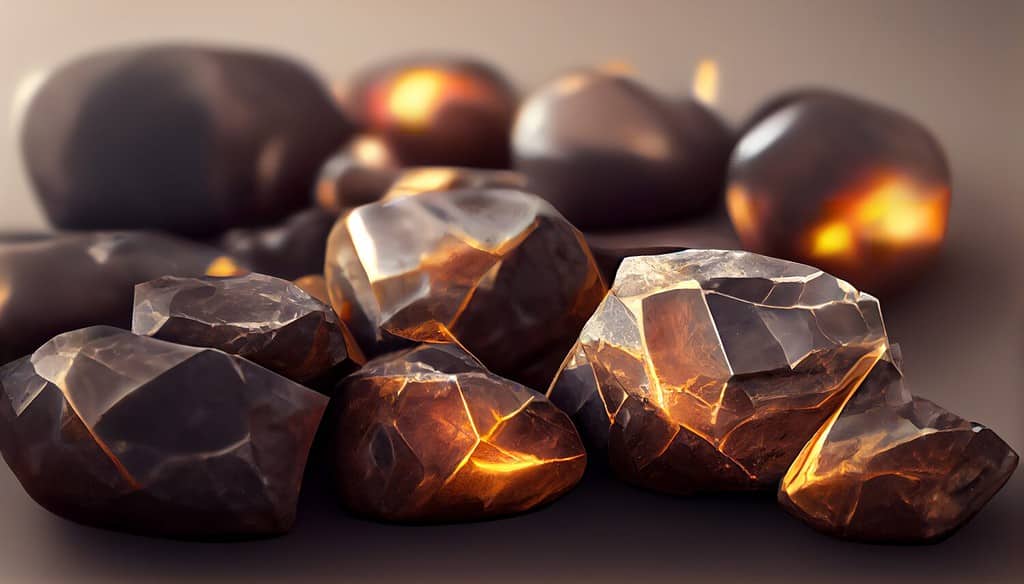
©Monika Stawowy/Shutterstock.com
Smoky quartz is a variant of quartz crystal and has a distinctive smoky brown to almost black color. Its characteristic hue is due to aluminum and natural irradiation within the crystal. With a hardness of 7 on the Mohs scale, smoky quartz is sturdy and versatile, making it suitable for various decorative pieces.
Smoky quartz is a popular crystal to use for protection, stress, and anxiety relief. It’s a grounding stone that connects its users with the earth and helps them feel secure and stable. It’s believed to neutralize negative vibrations and detoxify on all levels, encouraging fear, depression, and other negative emotions to dissipate. Many users also associate smoky quartz with enhancing focus, improving communication, and promoting positivity, which can be particularly beneficial during stressful times.
Holding a smoky quartz crystal during meditation, carrying it on one’s person, or placing it in a living or workspace may help create a soothing environment and a balanced state of mind, assisting in managing stress and anxiety.
How Do You Use Crystals for Anxiety?
You can use crystals in various ways to help alleviate anxiety and stress. One standard method is meditation, where the individual holds the crystal or places it nearby while practicing deep breathing and mindfulness. The crystal acts as a focal point, enhancing the calming effects of meditation by encouraging a clearer mind and better energy flow.
Another method is wearing or carrying the crystal as jewelry or a small stone in your pocket. This provides continuous calming energy throughout the day.
Some people also find comfort in creating a calming space with their crystals, positioning them strategically in their living or working environment. In addition, some crystals like amethyst or citrine are often placed under pillows to encourage peaceful sleep.
Regardless of the method used, the goal is to allow the crystal’s perceived soothing energy to resonate with your own, promoting relaxation and reducing stress and anxiety levels.
Where are Crystals Found in Nature?
Crystals are unique gifts from Earth that can be found all around the world. They grow in many different places, from deep underground to high up on mountains. The way they form is intriguing. It often takes many years and involves changes in the Earth’s crust, a process known as geology.
For example, quartz is often found where the Earth’s crust has moved a lot, like fault lines. Another crystal, amethyst, grows inside remarkable hollow rocks called geodes, and many of these are found in Brazil and Uruguay. On the other hand, citrine, a yellow crystal, can be made by heating amethyst. But it can also grow naturally in certain places like Russia, France, and Madagascar. And finally, emeralds are usually found in countries with lots of minerals in the ground, like Colombia, Zambia, and Brazil.
Are Crystals Safe to Use?
Crystals are generally safe to use in the context of their typical applications, such as holding, displaying, or wearing them. However, it’s important to note that the belief in their healing and therapeutic properties largely falls within the realm of alternative or complementary therapies, and scientific evidence has yet to support their effectiveness. Therefore, they should not be used as a substitute for professional medical advice, diagnosis, or treatment.
Some crystals can be toxic if ingested or mishandled, especially in certain raw or unpolished specimens. For instance, crystals like malachite and cinnabar should not be used in making elixirs or placed directly on the skin due to their potentially harmful components. Therefore, it’s crucial to research and understand the specific properties of each crystal you intend to use. If in doubt, always consult with a knowledgeable professional or a trusted source of information.
Summary of Top 8 Recommended Crystals for Anxiety and Stress
| Crystal | Mohs Scale (Hardness) |
|---|---|
| Citrine | 7 |
| Rose Quartz | 7 |
| Amethyst | 7 |
| Moonstone | 6 to 6.5 |
| Rhodonite | 5.5 to 6.5 |
| Celestite | 3 to 3.5 |
| Tourmaline | 7 to 7.5 |
| Smoky Quartz | 7 |
